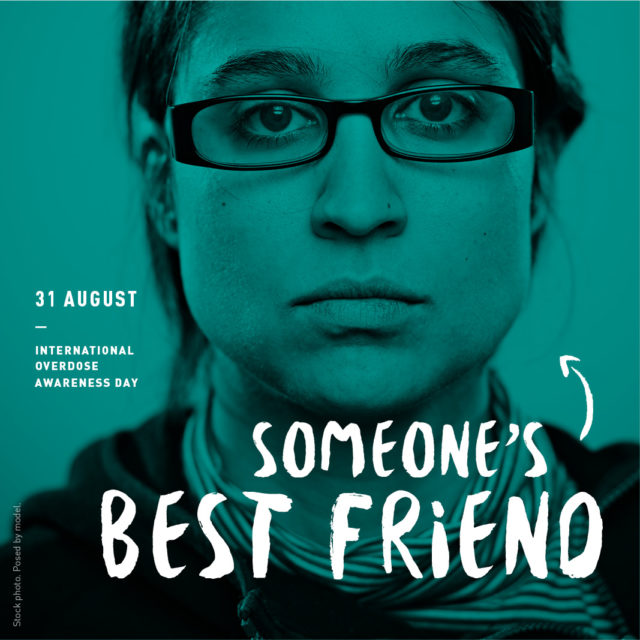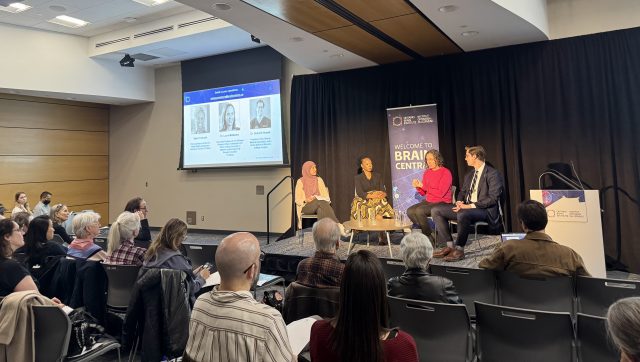By: Shaalee Sone, Outreach Intern, Ontario Brain Institute
There is a tendency to categorize people who have died or been injured by overdose as “others,” but overdose can affect anyone – our friends, our parents, our siblings, our children and even ourselves. The impact of overdose extends beyond each individual, onto their family, their friends and the people who care about them which is why we need to address the stigma around overdose collectively.
“People overdose in different contexts,” says Dr. Gustavo Turecki, Director of the McGill Group for Suicide Studies and Head of the Depressive Disorders Program at the Douglas Institute. Drug overdose can occur unintentionally in the context of substance use, or it could be in the context of an individual with depression, and therefore it is vital to understand the context before we begin intervention or therapy.
In the case of depression, it is common for people who are depressed to have suicidal thoughts. If these thoughts intensify, overdose is a convenient method to act on them due to the ease with which drugs can be accessed. For instance, in 2016 1 in 7 Ontarians received an opioid prescription for pain, cough, or addiction.
Conversely, treatment options for depression and addiction can be less accessible or cost-prohibitive, and the stigma that comes along can also prevent individuals from getting help. Dr. Turecki, speaking on the psychological impact of stigma, added, “stigma is often related to the perception that mental illness is a weakness. It’s a wrong perception that only weak people become mentally ill.” We all need mental health support at different times in our lives and deserve to be helped.
In 2015 in Ontario, two people died every day from opioid overdose, a 4-fold increase in just 25 years, and one fifth of these deaths were intentional. Opioids are also resulting in death beyond suicide: 80% of opioid deaths were accidental, mostly among youth and young adults aged 15 to 44. The recent surge in fentanyl has contributed to this increase, as well as hydromorphone and heroin.
“Overdose is frequently a non-lethal method,” notes Dr. Turecki. A suicide attempt or unintentional overdose may result in permanent injury. In fact, over the past 10 years, the number of Ontarians visiting the emergency room related to opioid use has doubled to over 4000 cases per year.
Considering the alarming increase in opioid-related deaths and injury, it is a critical to discuss mental health and addiction, and to remove the stigma around overdose so that the real issues can be effectively addressed, such as the cost on our healthcare system and on the families that have to deal with personal loss.
Successfully managing the overdose crisis will need each of us to contribute. Additionally, it is important for people to know how to react in an overdose situation. In some instances, it can take hours for a person to die from an overdose, so recognizing the signs of an opioid overdose and acting accordingly are critical.
The first step to addressing the growing overdose problem is discussing overdose, addiction and death openly just as we discuss any other disorder, and remembering that behind the label there is a person who needs help. This International Overdose Awareness Day let’s start the conversation about overdose and help the people who need us right now.
Signs of overdose and what to do
Opioids dampen our senses. Someone who has overdosed could be unresponsive and unable to be woken up, leaving their arms and legs limp. They may have a slow heart rate and shallow breathing, or they may not be breathing at all. They could be making usual snoring or gurgling sounds in their attempts to breath and have blue or grey lips or finger tips from the lack of oxygen.
It is important to act quickly because they could die from the lack of oxygen or sustain brain damage, and it is key not to let the person sleep it off.
If you suspect someone has overdosed on an opioid, the Ontario Addiction Treatment Centres provide these life-saving tips:
1. Call 911 right away.
2. Try to wake the person up by shaking them and shouting their name.
3. If they are unresponsive and naloxone is available inject the full amount into their thigh or upper arm.
4. If they are breathing place them in the recovery position lying down on one side to prevent choking.
5. If they are not breathing begin rescue breathing (2 breaths every 5 seconds).
6. Stay with the person until help arrives.
Additional resources
For more information on overdose, please take a look at the fact sheets about how to recognize and respond to an overdose of opioids, alcohol, depressants, psychoactive substances, stimulants, and crystal methamphetamine.
If you have lost a loved one to overdose, Grief Recovery After a Substance Passing can provide help, compassion and understanding, or you can find a local support affiliate through the Bereaved Families of Ontario.
Photo credit: https://www.overdoseday.com/resources/downloadable-resources/



